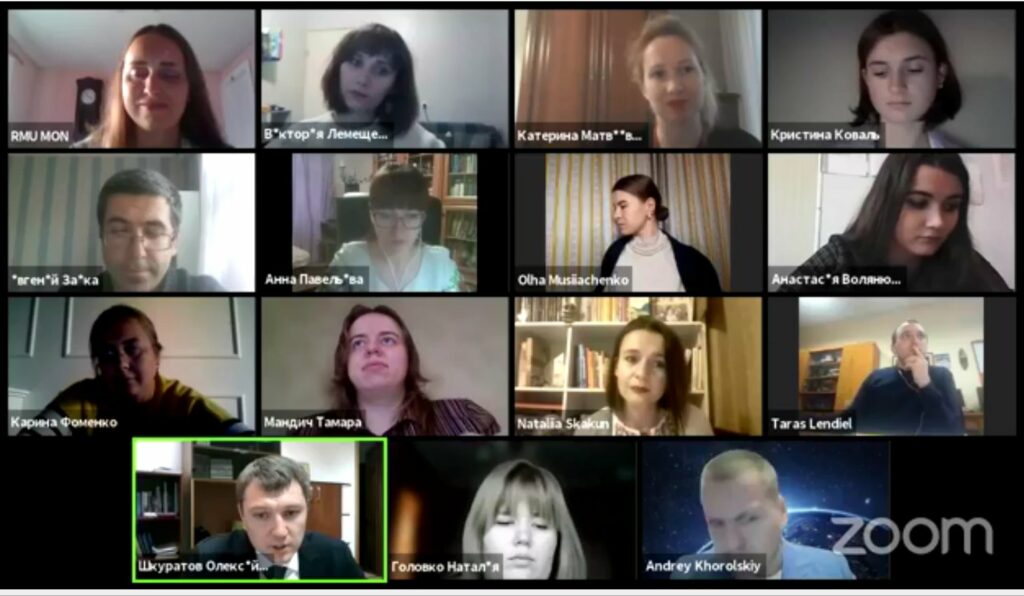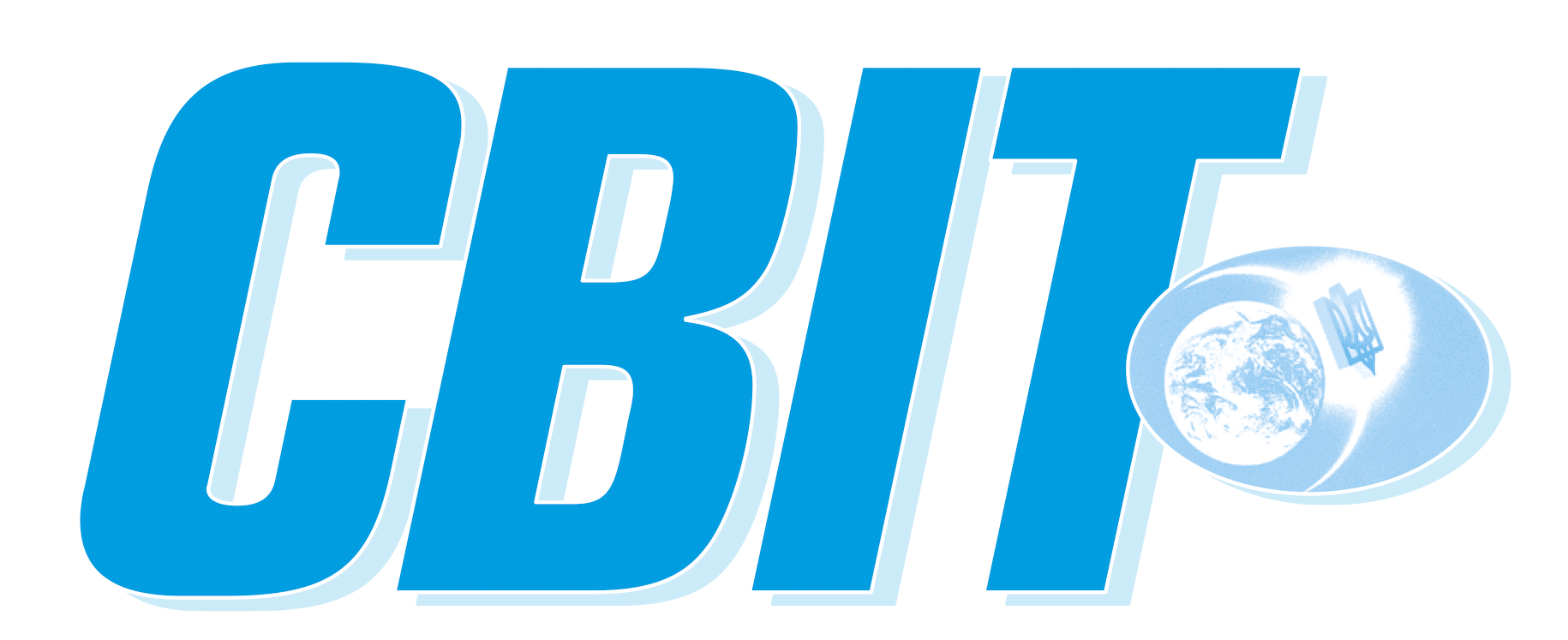Our young scientists are real enthusiasts. Even after a working day, they are ready to demonstrate their achievements, establish cooperation with colleagues and simply promote the field of science in which they work. A good opportunity to share their experiences is the “Night of Youth Science” held by the Council of Young Scientists at the Ministry of Education and Science of Ukraine. About 50 representatives of universities, research institutions and public organizations from all over Ukraine joined the latest event, which took place online due to the pandemic.

This time, the Night of Youth Science was timed to coincide with the World Science Day for Peace and Development. Both newcomers and those who took part in the event not for the first time had something to interest colleagues and spectators. The topics of the speeches were extremely broad: it was interesting for both “physicists” and “lyricists”.
ENERGY EFFICIENCY AND PROFIT
Automated control systems in greenhouse complexes provide the necessary parameters of the microclimate, air composition (in particular, the appropriate level of carbon dioxide), lighting, etc. Hence, we can enjoy fresh vegetables in the cold season too.
Associate Professor of Automation and Robotic Systems of the Academician I.I. Martynenko National University of Life and Environmental Sciences of Ukraine Taras Lendel spoke in detail about these systems, and presented patented developments as well. According to him, the share of energy resources in the cost of production may reach 70%, so it is very important to efficiently use energy.
The NULES scientists have developed mathematical models for adjustment of electrical systems, as well as a functional control scheme for growing quality vegetables in order to maximize profits. During the study, scientists used a camera in one of the greenhouse complexes that was located on a robotic platform.
CENTER FOR EQUIPMENT USE
At the Center for Collective Use of Scientific Equipment “Center for Scanning Probe Microscopy and Resonance Spectroscopy”, which operates at the G.V. Kurdyumov Institute of Metal Physics of the National Academy of Sciences of Ukraine, it is possible to conduct research using such methods as scanning tunneling microscopy, nuclear magnetic and electronic paramagnetic resonance and others, which allows to study various physical quantities: density distributions of electronic states, volt-ampere characteristics, surface conductivity, image atoms on the surface of metals, semiconductors and other materials. And the “star” of the Center is a Japanese scanning probe microscope.
Anastas Romansky, a graduate student of the Institute, reported about it during the “Night of Science”. “Our department cooperates with the Dataverse team,” he added. “Therefore, we can immediately open the received data in the repository. So far, three institutes of the National Academy of Sciences and Kyiv Academic University are involved in our project, but we will be very happy to welcome new institutions.”
Anastas Romansky also presented a joint development of scientists from the Institute of Metal Physics and the Institute of Problems of Materials Science: “Syntekist” medicinal drug for bone regeneration. “This drug successfully imitates the complex organic-mineral composition of bone tissue and is able to directly integrate with the patient’s bone tissue,” the young scientist said. “Today we are working on providing the drug with additional features, including anti-inflammatory and oncoprotective properties. That’s why we invite medical doctors and biologists to participate in this work.”
PHYSICS PROBLEMS
Natalia Golovko, Assistant Professor of the Department of Physics and Methods of Teaching at Kherson State University, presented a study on “Formation of students’ natural science competence through the use of physics situational problems”.
“Such problems are a useful resource”, she said. “Solving problems related to real life situations helps the student to imagine a physical situation, to make sure that it is vital, relevant and needs to be solved, and it is theoretical knowledge of physics that is needed to solve the problem.”
Ms. Golovko is convinced that the systematic application of such tasks provides internal motivation for students to study physics and also orients them to consciously choose the future engineering profession.
FEED SPACE TRAVELERS
How to provide astronauts with oxygen and food, especially given the prospects of many years of travel? Oleg Marenkov, Head of the Department of General Biology and Aquatic Bioresources at Oles Honchar Dnipro National University, tried to answer these questions in his report “Space Hydrobiology: From Earth to Mars”.
– In terms of space travel, the use of blue-green algae chlorella and cyanobacteria spirulina, which are producers of oxygen; they are used to purify water and can be used in the diet of astronauts, – Mr. Marenkov said.
But not the only algae. According to the scientist, it is possible to use such fish as tilapia as astronauts’ food: it is promising for growing in the conditions of long space flights. Research is also being conducted around the world to grow shrimp and mollusks in space.
– In our opinion, it is necessary to use freshwater shrimp and mollusks, because fresh water may be needed by astronauts for their own needs, – the scientist said. – And if you use salt water, it will need to be purified, because otherwise it will be unsuitable for drinking and growing plants.
Oleg Marenkov said that the laboratory of space hydrobiology was founded in DNU in 1961. Recently, astrobiology was added to the list of elective subjects at the University.
ON EARTH AND IN THE SKY
The Head of the Department of Telecommunication and Radio Electronic Systems of the National Aviation University Roman Odarchenko reported about the actual situation and prospects of using 5G technology in the aviation industry.
According to him, these technologies can be used both at airports and directly on aircraft, as well as in the training of pilots in order to ensure virtual reality, which will improve the connection stability, increase traffic density, etc.
The application for evacuation using 5G, and “smart parking” using special sensors is among the implemented projects in which the scientist participates (in particular, “5G-tours” under the “Horizon 2020” program).
As for the actual Ukrainian experience, Roman Odarchenko said that we developed a system for registration and monitoring of unmanned aerial vehicles using 5G networks.
THEORY OF ALTERNATIVE UTILITY
Taras Malyshivskyi, Chairman of the Council for Research Work of Students, Postgraduate Students and Young Scientists of the Vasyl Stefanyk Subcarpathian National University, presented one of the areas of youth science at the University; he spoke about the “Theory of alternative utility: the impact of budget constraints on the level of our happiness”. This is a study in the field of behavioral economics, a young science that is actively developing.
What is the importance of this theory? Consumerism or consumption is a social and economic order that encourages the purchase of goods and services in increasing quantities.
“Studying the problem will allow us to develop tips on how to reduce consumption without reducing the level of our happiness, but on the contrary – maximizing it”, Taras Malyshivsky said.
WHAT’S IN YOUR NAME?
The prospects of a new linguistic branch, ethnosocioonomastics, were discussed in the report of a graduate student of the O. Potebnia Institute of Linguistics of the National Academy of Sciences of Ukraine, Iryna Holotova. This filed of science is focused on the connection of one’s own name with non-linguistic factors through the lens of ethnic and linguistic structure of society, multilingualism, language rights. It is an interdisciplinary field that integrates elements of both linguistic and non-linguistic disciplines, including ethnolinguistics, ethnosociology, sociolinguistics and onomastics.
According to the researcher, the most important problems of ethnosocionomastics include the functioning of proper names in a polyethnic environment, in particular, the replacement of variants of one name by using others that may be etymologically unrelated (Zeynep – Zina, Emilia – Emma, etc.), word-formation and phonetic transformations of the name (for example, the Turkic name Gulnar in the post-Soviet space became widespread as Gulnara), tracing the proper name of one language by means of another, creating double names involving onyms of different language systems (for example, one name may reflect the nationality of the father and another one – of the mother ), the study of proper names in terms of language rights of ethnic groups.
Tamara Mandych, Head of the Scientific Society of Students, Postgraduate Students, Doctoral Students and Young Scientists of Kherson State University, Lecturer of the Department of Ukrainian and Slavic Philology and Journalism, presented the results of the study of Ukrainian sports commentators …speech, when the words take on a new meaning. About a thousand of metaphors, personifications, paraphrases, comparisons and phraseological units are collected in the author’s work, “Dictionary of Commentary Speech”. The source base was 472 broadcasts from 1992 to 2020. “The number of lexical items we have recorded shows that the Ukrainian language has a high potential for enrichment and discovery of new meanings”, Tamara Mandych concluded.
“REVIVAL” HISTORY
One of the projects, which arose in the scientific society of students, graduate students, doctoral students and young scientists of the Borys Hrinchenko University of Kyiv, is the Kyiv theatrical sightseeing tours. According to the Head of the Society Olga Musiyachenko, this project combines both scientific interests and professional skills of its participants.
The purpose of the excursions is to “revive history”, to involve different groups of sources (newspapers, statistics, advertisements, music, clothes, etc.), to explore complex issues of Kyiv’s history, promote iconic figures, pay attention to little-known monuments. “Pechersk Fortress: a journey into the past”, “Kyiv in the days of Borys Hrinchenko”, “Kyiv in Ivan Nechuy-Levytsky works”, “Kyiv: the city of Pidmohylny”, “Tourist Kyiv of the late 19th – early 20th century” are among the thematic routes. According to Olga Musiyachenko, this form has become popular throughout Ukraine, but each city has its own characteristic aspects.
Dmytro Shulikin
Svit newspaper, № 43 – 44, November 2021
